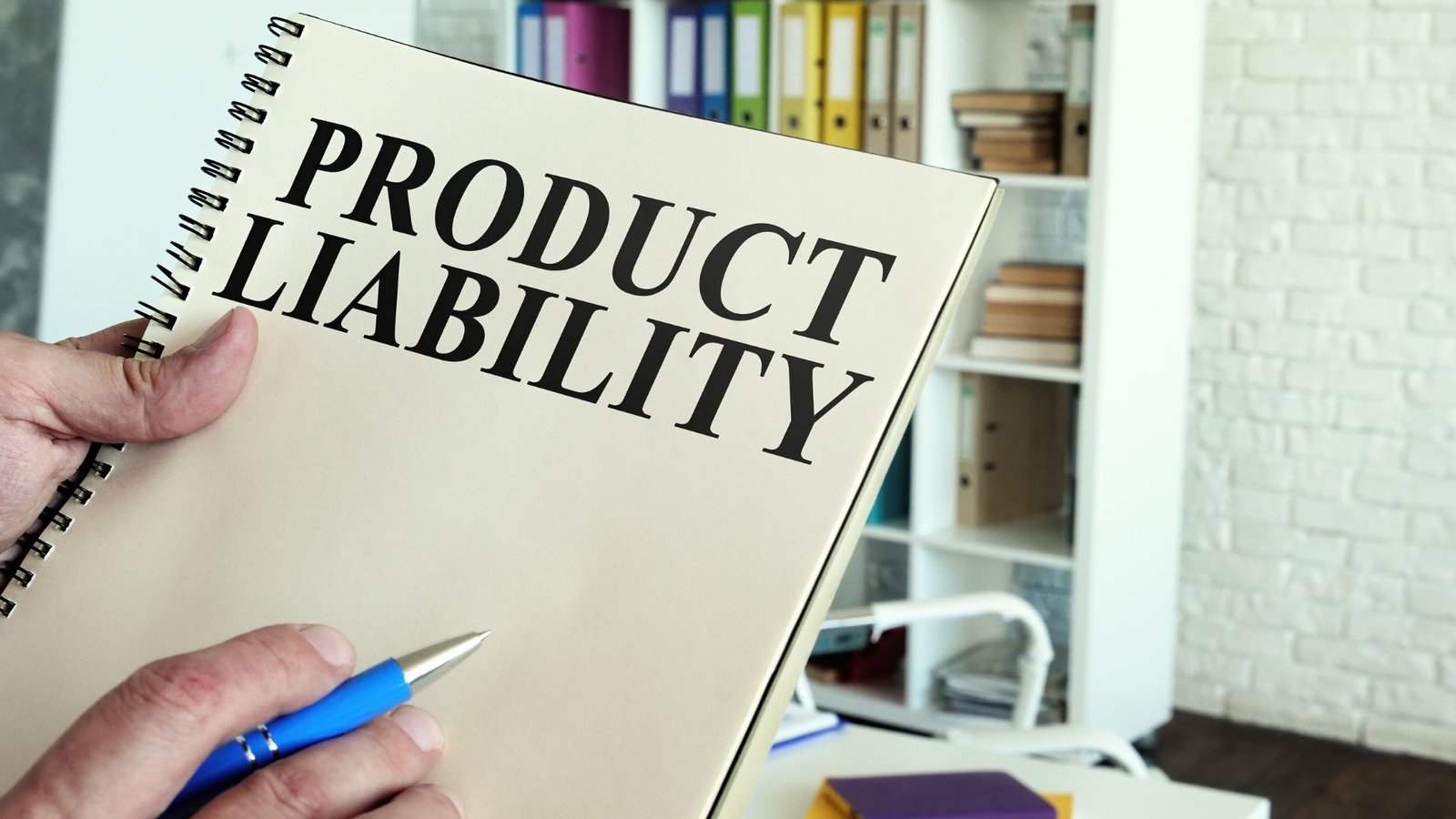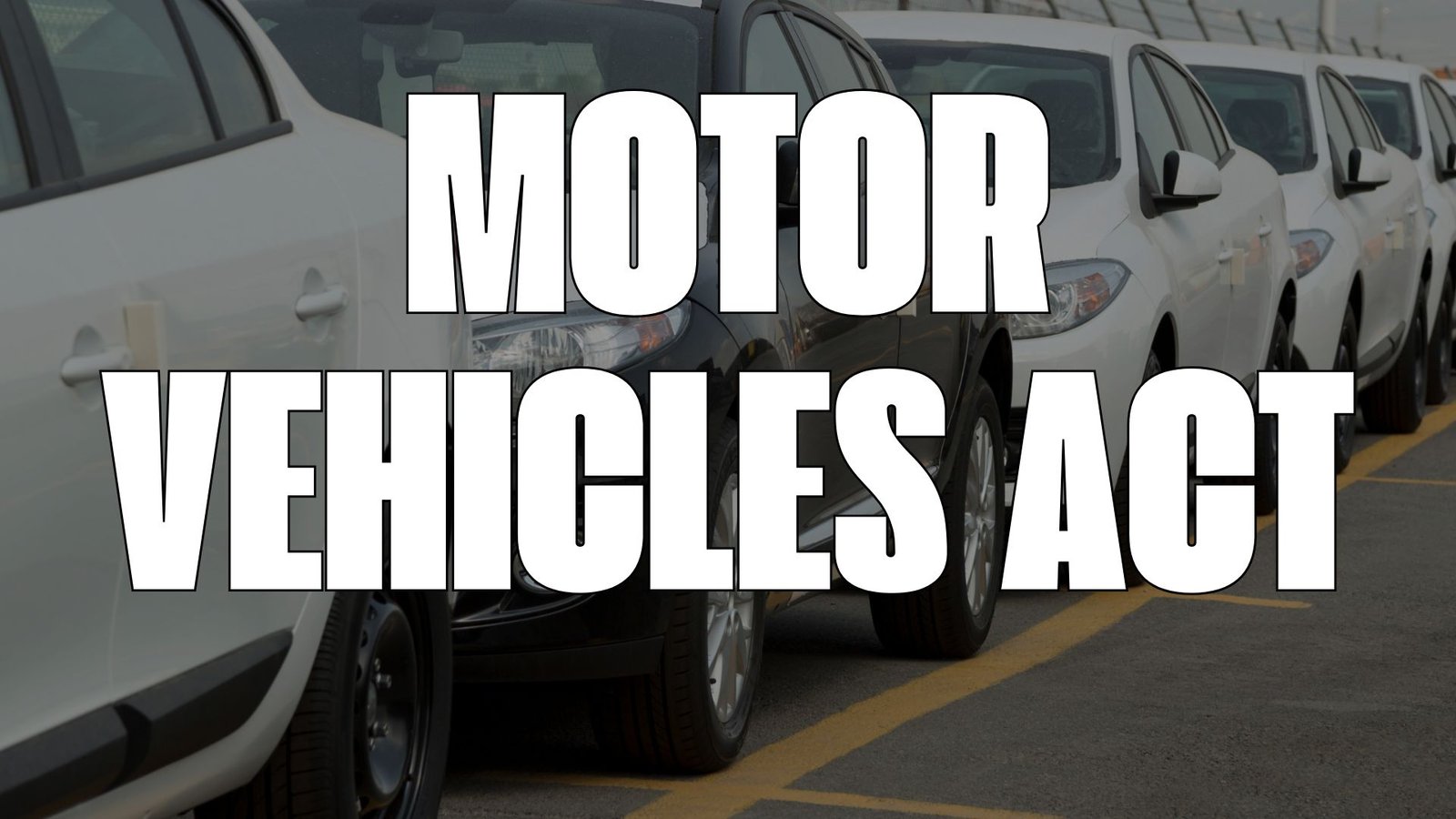On this page you will read detailed information about Product Liability under India’s Consumer Protection Act 2019.
As a consumer in India, you have robust protections under the Consumer Protection Act, 2019. This landmark legislation introduced sweeping changes, including a new chapter on product liability. You now have expanded rights to seek compensation for harm caused by defective products. Whether you’ve suffered injury, property damage, or other losses, manufacturers and sellers can be held accountable. Understanding these provisions empowers you to make informed choices and pursue legal recourse when warranted. This article examines the key aspects of product liability under the Act, outlining what it means for you as a consumer and the implications for businesses operating in India.
Overview of Product Liability Law in India
Evolution of Product Liability Legislation
Prior to 2019, India lacked a dedicated legal framework for product liability. Claims were primarily handled under existing contract and tort laws, including the Sale of Goods Act, 1930, and the Consumer Protection Act, 1986. This absence of a comprehensive regime often led to confusion and inconsistent approaches in addressing product-related issues.
The Consumer Protection Act, 2019: A Paradigm Shift
The introduction of the Consumer Protection Act, 2019 (CPA 2019) marked a significant turning point in India’s product liability landscape. This legislation established a robust framework for product liability, shifting the responsibility from “Buyer Beware” to “Seller Beware”. Under the new law, manufacturers, sellers, and service providers can be held liable for defective products or inadequate services.
Key Provisions and Liabilities
The CPA 2019 introduces several crucial provisions:
- Definition of Terms: The Act clearly defines “product”, “goods”, and “services”, providing a comprehensive scope for liability claims.
- Liability of Manufacturers: Manufacturers can be held accountable for manufacturing defects, design flaws, deviations from specifications, and failure to provide adequate warnings or instructions.
- Seller Responsibility: Product sellers may be liable if they exercised substantial control over the product, made modifications, or failed to exercise reasonable care.
- Service Provider Accountability: Service providers can face liability for faulty services, negligence, or failure to provide adequate instructions.
Enforcement and Consumer Protection
The Act establishes a multi-tiered consumer protection framework, including the Central Consumer Protection Authority (CCPA). This body is empowered to regulate unfair trade practices and false advertisements, imposing significant penalties for violations. By introducing stricter liability and deterrent penalties, the CPA 2019 aims to enhance consumer protection and promote responsible business practices in India.
Key Provisions under the Consumer Protection Act 2019
The Consumer Protection Act 2019 introduces several groundbreaking provisions to safeguard consumer interests in the digital age. This comprehensive legislation aims to address emerging challenges in e-commerce and strengthen consumer rights across various sectors.
Expanded Definition of ‘Consumer’
The Act widens the definition of ‘consumer’ to encompass all types of transactions, including online purchases through e-commerce platforms, teleshopping, direct selling, and multi-level marketing. This expansion ensures that consumers are protected regardless of the mode of purchase.
Central Consumer Protection Authority (CCPA)
A significant addition is the establishment of the Central Consumer Protection Authority (CCPA). This regulatory body has wide-ranging powers to:
- Take suo-moto actions against violations of consumer rights
- Order product recalls and reimbursements
- Impose penalties on manufacturers, sellers, and endorsers
- File class-action suits on behalf of consumers
Product Liability
The Act introduces the concept of ‘product liability’, making manufacturers, service providers, and sellers responsible for compensating consumers for injury or damage caused by defective products or deficient services. This provision significantly enhances consumer protection and encourages businesses to maintain high quality standards.
E-commerce Regulations
Recognizing the growing importance of online shopping, the Act brings e-commerce transactions under its purview. It mandates e-commerce platforms to provide detailed product information and establish robust grievance redressal mechanisms. The Department of Consumer Affairs has also notified the Consumer Protection (E-commerce) Rules, 2020 to further safeguard online consumers.
Enhanced Dispute Resolution
The Act mandates the establishment of Consumer Disputes Redressal Commissions at the national, state, and district levels. These commissions have increased pecuniary jurisdiction, allowing them to handle cases of higher value. Additionally, the Act introduces mediation as an alternative dispute resolution mechanism, providing consumers with more options for addressing their grievances.
In the previous post, we had shared information about The Maximum Retail Price Act, 2014
, so read that post also.
Strict Liability for Product Defects
The Consumer Protection Act, 2019 introduces a robust framework for product liability in India, emphasizing strict liability for manufacturers, sellers, and service providers. This concept holds businesses accountable for defective products, regardless of fault or negligence.
Key Elements of Strict Liability
Under the Act, strict liability applies when a product fails to meet the safety standards that consumers reasonably expect. This includes manufacturing defects, design flaws, or inadequate warnings about potential risks. Importantly, the burden of proof shifts from the consumer to the manufacturer or seller, making it easier for consumers to seek redress.
Scope of Application
The strict liability principle extends to a wide range of products and services. It covers not only tangible goods but also digital products and services. This broad application ensures comprehensive consumer protection in an increasingly digital marketplace.
Exceptions and Defenses
While the Act imposes strict liability, it also provides certain defenses for businesses. These may include:
- Compliance with mandatory standards imposed by law
- The defect did not exist when the product was put into circulation
- The product was not manufactured for sale or commercial distribution
However, these defenses are limited and carefully scrutinized to maintain strong consumer protection.
Impact on Businesses
The strict liability regime necessitates that businesses implement rigorous quality control measures and comprehensive product testing. Companies must also ensure clear and adequate product labeling and user instructions to mitigate liability risks. This heightened responsibility ultimately fosters a culture of safety and quality in the Indian market, benefiting both consumers and reputable businesses.
Defenses Available to Manufacturers
Under the Consumer Protection Act 2019, manufacturers have several defenses at their disposal to mitigate product liability claims. Understanding these defenses is crucial for businesses to protect themselves against potential legal challenges.
Regulatory Compliance and Standards
Demonstrating compliance with regulatory requirements and prescribed standards can help mitigate a manufacturer’s liability. However, it’s important to note that this may not serve as an absolute shield against liability claims. Manufacturers should still exercise due diligence in product design and manufacturing processes.
Consumer Misuse and Negligence
Manufacturers can claim contributory negligence or misuse by the consumer as a defense. If it can be shown that the loss or injury was due to the consumer’s negligence or misuse of the product, the manufacturer may avoid liability. This defense underscores the importance of clear product instructions and warnings.
Product Modifications
If a manufacturer can prove that the consumer had modified the product at the time of harm, causing the injury, they may avoid liability. This defense highlights the need for manufacturers to clearly communicate the risks of product modifications to consumers.
Obvious Dangers and Common Knowledge
Manufacturers are not required to provide warnings for dangers or characteristics that a reasonable consumer is expected to know. This defense recognizes that consumers have a responsibility to use products with common sense and awareness of obvious risks.
Time Limitations
Claims of manufacturing defects brought after an unreasonably long period may be dismissed, unless strong evidence can show an inherent defect. This defense acknowledges that products may naturally wear out over time and protects manufacturers from unfair claims.
By understanding and properly implementing these defenses, manufacturers can better protect themselves against product liability claims while ensuring consumer safety remains a top priority.
Burden of Proof in Product Liability Cases
In product liability cases under India’s Consumer Protection Act 2019, the burden of proof plays a crucial role in determining the outcome. Understanding how this burden is distributed between parties is essential for both consumers and manufacturers.
General Rule: Plaintiff’s Responsibility
According to legal experts, the general rule in India is that the party seeking relief or enforcement of its legal rights must prove the facts that establish its claim. This principle applies to product liability cases as well. As a plaintiff in such a case, you bear the initial burden of proving:
- The presence of a defect in the product
- Breach of warranty or condition
- Breach of duty of care by the defendant resulting in damage
Shifting Burden: Exceptions to the Rule
While the initial burden lies with the plaintiff, there are instances where it may shift to the defendant:
- Defect as Proof of Negligence: In some cases, courts have held that the mere existence of a defect is proof of negligence, effectively shifting the burden to the defendant.
- Statutory Presumptions: Certain statutes, such as the Drugs Act and Food Safety and Standards Act, create a presumption of an offense, requiring the accused to prove their innocence.
Defendant’s Defenses
As a defendant in a product liability case, you can raise various defenses to counter the plaintiff’s claims:
- Compliance with statutory standards
- The plaintiff not qualifying as a “consumer”
- Loss or injury due to the plaintiff’s own negligence
- Contractual disclaimers or limitations on warranties
It’s important to note that India does not recognize a “state of the art” defense, unlike some other jurisdictions.
Understanding these nuances in the burden of proof can significantly impact the strategy and outcome of product liability cases under the Consumer Protection Act 2019.
Claiming Compensation for Damages
Filing a Complaint
If you’ve suffered harm due to a defective product or deficient service, you have the right to claim compensation under the Consumer Protection Act 2019. To initiate the process, you can file a complaint with the appropriate consumer forum. It’s crucial to act promptly, as complaints must be filed within 2 years of the cause of action.
Establishing Liability
To successfully claim compensation, you need to establish the manufacturer’s, seller’s, or service provider’s liability. This can be done by demonstrating:
- Manufacturing defects
- Design flaws
- Deviations from specifications
- Failure to meet express warranties
- Lack of adequate instructions or warnings
- Faulty or deficient services
- Negligence or omission by the responsible party
According to the Consumer Protection Act 2019, product sellers can also be held liable if they exercised substantial control over the product, altered it, or failed to pass on manufacturer warnings.
Potential Remedies
If your claim is successful, consumer forums can award various remedies, including:
- Removal of product defects
- Replacement of the defective product
- Refund of the purchase price
- Compensation for damages suffered
- Discontinuation of unfair trade practices
- Withdrawal of hazardous goods from the market
It’s important to note that the Central Consumer Protection Authority (CCPA) can impose civil penalties of up to ₹10,00,000 on manufacturers, endorsers, or publishers of false and misleading advertisements. For subsequent contraventions, this penalty can increase to ₹50,00,000.
Role of Regulatory Authorities
In India, regulatory authorities play a crucial role in implementing and enforcing product liability laws under the Consumer Protection Act, 2019. While these authorities don’t bear statutory liability for defective products, they are responsible for establishing compliance standards and enforcing relevant legislation.
Central Consumer Protection Authority (CCPA)
The Consumer Protection Act, 2019 established the Central Consumer Protection Authority (CCPA) to protect, promote, and enforce consumer rights. The CCPA has the power to investigate violations, issue directions, and impose penalties for false or misleading advertisements and unfair trade practices. Importantly, it can direct the recall of dangerous, hazardous, or unsafe goods, enhancing consumer safety.
Sector-Specific Regulatory Bodies
Several sector-specific authorities also play vital roles in product liability:
- The Ministry of Road Transport and Highways (MoRTH) can order motor vehicle manufacturers to recall vehicles with defects that may harm the environment, drivers, occupants, or other road users.
- The Bureau of Indian Standards (BIS) has the authority to direct the recall of goods or articles that don’t conform to mandatory standards.
- The Food Safety and Standards Authority of India (FSSAI) ensures the removal and recall of unsafe food products from the market.
These authorities can take enforcement actions such as issuing directions to stop supply or sale, recalling non-conforming goods, and imposing penalties for non-compliance with prescribed standards.
While India lacks a single designated regulatory body governing product safety reporting or recalls across all sectors, these various authorities collectively work to ensure consumer protection and product safety. Their roles underscore the shift from a “buyer beware” to a “seller beware” doctrine in Indian consumer law.
Recent Important Product Liability Cases in India
Volkswagen Emission Scandal
In a landmark case, the National Green Tribunal imposed significant fines on Volkswagen for the emission scandal that rocked the automotive industry. This case highlighted the growing emphasis on environmental protection and corporate accountability in India’s product liability landscape.
Johnson & Johnson Faulty Hip Implants
The Johnson & Johnson faulty hip implant case marked a crucial turning point in medical device liability. The government ordered compensation for affected patients, setting a precedent for holding multinational corporations accountable for defective medical products.
NCDRC Clarification on Vehicle Safety
The National Consumer Disputes Redressal Commission (NCDRC) recently provided important clarifications on vehicle safety mechanisms, particularly regarding airbags and seatbelts. The Commission emphasized that seatbelts are the primary safety devices, with airbags designed to deploy only when seatbelts are worn. This ruling has significant implications for product liability cases involving automotive safety features.
Strict Liability for Bystanders
While not a specific case, there’s growing discussion about extending strict product liability protection to bystanders. Currently, the Consumer Protection Act, 2019 does not explicitly cover bystanders who are not purchasers or users of a product. Legal experts argue for closing this gap to ensure comprehensive consumer protection, drawing inspiration from similar developments in the United States.
These cases demonstrate the evolving nature of product liability law in India, reflecting a growing emphasis on consumer rights, corporate responsibility, and the need for a robust legal framework to address emerging challenges in product safety and liability.
FAQs on Product Liability under the Consumer Protection Act 2019
Product liability under the Consumer Protection Act 2019 refers to the responsibility of manufacturers, sellers, or service providers to compensate consumers for harm caused by defective products or deficient services. This concept, introduced for the first time in India, aims to enhance consumer protection and shift the burden of product safety from buyers to sellers.
The Act specifies three main parties that can be held liable:
i) Product manufacturers: For defects in manufacturing, design, or failure to provide adequate warnings.
ii) Product sellers: If they exercised substantial control over the product or made independent warranties.
iii) Service providers: For faulty, imperfect, or inadequate services.
The Act covers a wide range of harm, including injury, death, property damage, and mental or emotional distress. Consumers can seek various remedies such as repair, replacement, refund, or compensation for damages incurred.
Yes, manufacturers and sellers can defend themselves if they can prove that:
i) The consumer misused, altered, or modified the product
ii) The danger was obvious or commonly known to the consumer
iii) The consumer was under the influence of intoxicants while using the product
Consumers can file complaints either offline through consumer forums or online through the government’s consumer helpline portal. It’s important to note that complaints must be filed within two years of discovering the defect. The Act has established a structured redressal system through Consumer Commissions at district, state, and national levels for efficient resolution of disputes.
Conclusion
As you navigate the evolving landscape of consumer rights in India, understanding product liability under the Consumer Protection Act, 2019 is crucial. This legislation empowers you with enhanced protections and recourse against defective or unsafe products. By familiarizing yourself with the expanded scope of liability, stricter penalties for manufacturers, and streamlined dispute resolution processes, you can make more informed purchasing decisions and effectively assert your rights as a consumer. Stay vigilant, document your purchases, and don’t hesitate to seek redress if you encounter issues. The Act serves as a powerful tool in your arsenal, ensuring a fairer marketplace and holding businesses accountable for the products they offer.
Disclaimer
The information and services on this website are not intended to and shall not be used as legal advice. You should consult a Legal Professional for any legal or solicited advice. While we have good faith and our own independent research to every information listed on the website and do our best to ensure that the data provided is accurate. However, we do not guarantee the information provided is accurate and make no representation or warranty of any kind, express or implied, regarding the accuracy, adequacy, validity, reliability, availability, or completeness of any information on the Site. UNDER NO CIRCUMSTANCES SHALL WE HAVE ANY LIABILITY TO YOU FOR ANY LOSS OR DAMAGE OF ANY KIND INCURRED AS A RESULT OR RELIANCE ON ANY INFORMATION PROVIDED ON THE SITE. YOUR USE OF THE SITE AND YOUR RELIANCE ON ANY INFORMATION ON THE SITE IS SOLELY AT YOUR OWN RISK. Comments on this website are the sole responsibility of their writers so the accuracy, completeness, veracity, honesty, factuality and politeness of comments are not guaranteed.
So friends, today we talked about Product Liability under India’s Consumer Protection Act 2019, hope you liked our post.
If you liked the information about Product Liability under India’s Consumer Protection Act 2019, then definitely share this article with your friends.
Knowing about laws can make you feel super smart ! If you find value in the content you may consider joining our not for profit Legal Community ! You can ask unlimited questions on WhatsApp and get answers. You can DM or send your name & number to 8208309918 on WhatsApp







